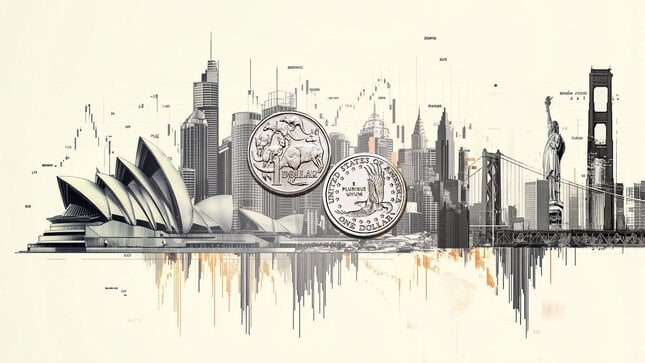The week started on a mixed note. Bank stress further eased with PacWest and Western Alliance, which were the two banks that were on the chopping block after the First Republic Bank got swallowed by JPM, rallied, but gave back most of earlier gains. PacWest – which was up by more than 30% pre-market, ended the session with a 3.65% gain and Western Alliance with a 0.60% advance. But the SPDR’s US regional bank index lost 2%, as a confirmation that this type of wild price volatility is bad, even though it is on the top side.
Tighter credit conditions
Federal Reserve’s (Fed) senior loan officer opinion survey, which became the new hot data to watch for investors who are trying to put a hand on how much this whole crisis impacted credit conditions - came in worse than expected. The data showed that the banks who tightened credit conditions were higher than expected, around 46%, versus 44.8% expected. Tighter standards, weaker demand for commercial and industrial loans, less favorable macro conditions, reduced tolerance for risk, deterioration in collateral values and concerns about banks’ funding costs and liquidity positions were among key words and phrases that flashed out of that survey.
Debt ceiling impasse
On the political front, tensions regarding the US debt ceiling impasse remain high as US President Joe Biden meets congressional leaders today to discuss about a possibility to lift the debt ceiling to avoid a default which could hit the US as early as June 1st.
While suspense is killing everyone, Bill Gross, Pimco’s ex CIO says it’s a good idea to buy short term US papers at the current prices, as the debt ceiling discussion is ‘ridiculous, it always gets resolved’. Buying one, two-month treasury bills at a much higher rate than longer term papers is a good opportunity, according to him.
Indeed, the US 1-month bill now yields around 5.50%, while the 10-year paper is still around 3.50%. Note that this is not a risk-free trade, there is always a chance that an agreement on debt ceiling is not reached quickly and the risk is default gets real, but that’s the price you pay for taking the risk. No risk, no return!
In the FX
The US dollar outlook remains soft due to the bank stress and the debt ceiling impasse, which both increase the chances of slower growth and soften the Fed expectations. The dollar index has been slightly better at the start of this week, yet strong economic data, closely related to US inflation, could further weigh on the US dollar, as strong data means higher inflationary pressures, at a time when the Fed cannot keep raising the rates due to stress on banks. As a result, expected real returns for US denominated assets would fall, the natural preference for US denominated assets would decline, so would the value of the US dollar.
Buy Euro at a dip?
Despite a solid selling pressure above the 1.10 mark, price pullbacks in the EURUSD remain interesting opportunities for those looking for dip-buying opportunities.
Released yesterday, the 3.4% slump in German industrial production – which was the highest in a year - certainly came a slap on investors’ face, as the expectation was a 1.5% fall only. So the disappointing German data also revived the odds that the Q1 GDP could also be revised lower, and weigh on ECB rate hike expectations. On top of that, the euro area’s investor confidence index unexpectedly slumped as well.
But, despite signs of slowing economy, the European Central Bank (ECB) will remain focused on fighting inflation, and the latter means higher rates despite slowing activity – if of course slowing activity doesn’t lead to slower price pressures.
For now, ECB’s Chief economist Philip Lane warns that ‘there is still momentum in food and core inflation, which is for this year running in the opposite direction to the decline in energy inflation.’ It sure needs to be addressed. Therefore, I keep my medium-term target unchanged at 1.1225 for the EURUSD.
China imports slump
The latest trade data from China showed that the Chinese exports grew faster than expected in April, and imports fell faster than expected as well. As such, China’s trade balance hit $90bn, versus around $70bn expected by analysts. Rising Chinese exports is good sign for global economy, while lower Chinese imports is a bad sign for companies exporting to China. Maybe but just maybe, it could be time to slow down bets for further gains in French luxury brands, as the likes of LVMH, which had a stellar year, partly thanks to the returning Chinese demand? Other news from China is less encouraging.
Crude rebounds
In energy, American crude advanced past $73.50 per barrel yesterday, but slipped below the $73 level on worries that the Chinese recovery may not be as strong as predicted, and that slower global growth could further hit demand. Price advances into $75/76 will likely see strong resistance.
This report has been prepared by Swissquote Bank Ltd and is solely been published for informational purposes and is not to be construed as a solicitation or an offer to buy or sell any currency or any other financial instrument. Views expressed in this report may be subject to change without prior notice and may differ or be contrary to opinions expressed by Swissquote Bank Ltd personnel at any given time. Swissquote Bank Ltd is under no obligation to update or keep current the information herein, the report should not be regarded by recipients as a substitute for the exercise of their own judgment.
Recommended Content
Editors’ Picks

Gold Price Annual Forecast: 2026 could see new record-highs but a 2025-like rally is unlikely Premium
Gold hit multiple new record highs throughout 2025. Trade-war fears, geopolitical instability and monetary easing in major economies were the main drivers behind Gold’s rally.

AUD/USD Price Annual Forecast: Is 2026 the year the Aussie breaks above 0.70? Premium
In a context where AUD/USD rate differentials, institutional credibility, and geopolitical dynamics are once again central, 2026 could mark a new phase in the balance of power between the Australian Dollar and the US Dollar.

USD/INR Price Annual Forecast: Indian Rupee could disappoint both optimists and pessimists alike in 2026 Premium
The Indian Rupee (INR) has seen a consistent depreciation against the US Dollar (USD) for the last several years and turned out to be the worst-performing Asian currency in 2025.

Top 10 crypto predictions for 2026: Institutional demand and big banks could lift Bitcoin
Bitcoin’s (BTC) adoption story is unraveling and the king crypto could see institutional demand return in 2026. Crypto asset managers like Grayscale are betting on Bitcoin’s rally to a new all-time high next year, and themes like Bitcoin as a reserve asset are emerging.

S&P 500 Price Annual Forecast: 2026 to benefit from decent growth as Trump runs it hot Premium
BlackRock, the world's largest asset manager, ran an online survey in early December asking respondents whether attractive returns for risk assets would continue for a fourth straight year in 2026.

Best Brokers for EUR/USD Trading
SPONSORED Discover the top brokers for trading EUR/USD in 2025. Our list features brokers with competitive spreads, fast execution, and powerful platforms. Whether you're a beginner or an expert, find the right partner to navigate the dynamic Forex market.